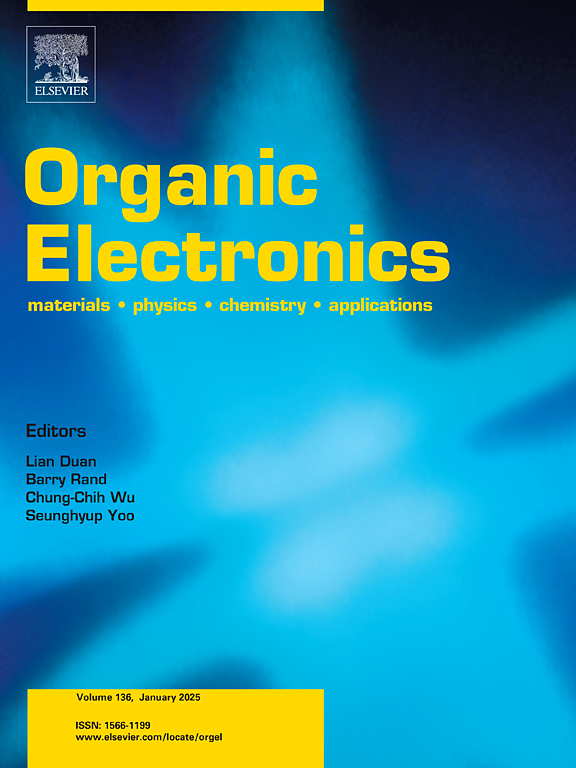利用供体稀释和逐层制造技术提高三元聚合物太阳能电池的效率和稳定性
IF 2.6
4区 工程技术
Q3 MATERIALS SCIENCE, MULTIDISCIPLINARY
引用次数: 0
摘要
优化活性层的形态对于提高聚合物太阳能电池的功率转换效率(PCE)至关重要,这是有机光伏研究的一个关键目标。在这项研究中,我们通过采用顺序沉积法和供体稀释策略的协同组合,显著改善了活性层的形态。此外,在给体层中引入少量分子受体作为第三组分,证明了第三组分有利于受体材料上层向下渗透,并沿垂直方向建立给体-受体界面梯度分布,提高了载流子的利用率和传输效率。此外,第三组分的存在部分抑制了纯给体相的形成,进一步促进激子解离,提高电荷收集效率。结果表明,PBQx-TF: L8-BO/ btp - ec9基PSCs的短路电流密度(Jsc)、填充因子(FF)和开路电压(Voc)均有显著提高,最终pce均超过18%。因此,这项工作为制造高性能psc提供了一种有价值的策略,为优化有源层形态以提高光伏性能提供了见解。本文章由计算机程序翻译,如有差异,请以英文原文为准。

Enhancing efficiency and stability of ternary polymer solar cells by employing donor dilution and layer-by-layer fabrication techniques
Optimizing the morphology of the active layer is crucial for enhancing the power conversion efficiency (PCE) of polymer solar cells (PSCs), a key objective in organic photovoltaic research. In this study, we achieved significant improvements in active layer morphology by employing a synergistic combination of the sequential deposition method and the donor dilution strategy. In addition, a small amount of molecular acceptor was introduced as a third component into the donor layer, it was proved that the third component facilitated downward penetration of the upper layer of acceptor materials and establishing a gradient distribution of the donor-acceptor interface along the vertical direction, which enhanced both the utilization and transport efficiency of charge carriers. Moreover, the presence of the third component partially suppressed the formation of pure donor phases, further enhancing exciton dissociation and increasing charge collection efficiency. As a result, the short-circuit current density (Jsc), fill factor (FF), and open-circuit voltage (Voc) of the PBQx-TF: L8-BO/BTP-eC9-based PSCs were significantly improved, and ultimately resulting in PCEs surpassding 18 %. Therefore, this work presents a valuable strategy for fabricating high-performance PSCs, offering insights into optimizing active layer morphology for improved photovoltaic performance.
求助全文
通过发布文献求助,成功后即可免费获取论文全文。
去求助
来源期刊

Organic Electronics
工程技术-材料科学:综合
CiteScore
6.60
自引率
6.20%
发文量
238
审稿时长
44 days
期刊介绍:
Organic Electronics is a journal whose primary interdisciplinary focus is on materials and phenomena related to organic devices such as light emitting diodes, thin film transistors, photovoltaic cells, sensors, memories, etc.
Papers suitable for publication in this journal cover such topics as photoconductive and electronic properties of organic materials, thin film structures and characterization in the context of organic devices, charge and exciton transport, organic electronic and optoelectronic devices.
 求助内容:
求助内容: 应助结果提醒方式:
应助结果提醒方式:


